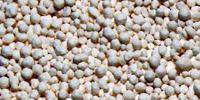Plant pathology (also known as phytopathology) is the scientific study of plant illnesses caused by pathogens (infectious organisms) and environmental variables (physiological factors). It is the scientific investigation of plant diseases, including their causes, symptoms, and management. It is a subfield of plant science that studies the interactions between plants and diseases such as fungi, bacteria, viruses, nematodes, and other microbes. Plant diseases can have substantial economic and ecological consequences by reducing agricultural yields, lowering food quality, and even killing plants in natural environments.
Fungi, oomycetes, bacteria, viruses, viroids, virus-like organisms, phytoplasmas, protozoa, nematodes, and parasitic plants are among the organisms that cause infectious disease. Ectoparasites such as insects, mites, vertebrates, and other pests that devour plant tissues are not included.
Pathogen identification, disease causation, disease cycles, economic effect, plant disease epidemiology, plant disease resistance, how plant diseases affect humans and animals, pathosystem genetics, and plant disease management are all part of plant pathology.
Here are some key aspects of plant pathology:
- Pathogens: Plant pathogens are bacteria or substances that cause plant diseases. Fungi (e.g., rusts, powdery mildews), bacteria (e.g., fire blight), viruses (e.g., tobacco mosaic virus), and nematodes (e.g., root-knot worms) are common plant pathogens.
- Disease Symptoms: Leaf patches, wilting, stunted growth, yellowing (chlorosis), rotting, and cankers are all symptoms of plant diseases. The specific symptoms are determined by the pathogen and the plant species involved.
- Disease Cycle: Understanding the plant pathogen life cycle is critical for disease management. Knowing how the pathogen spreads, lives, and reproduces within the plant and in the environment is essential.
- Disease Diagnosis: Plant pathologists use various techniques to diagnose plant diseases. This includes visual observation of symptoms, laboratory tests (e.g., microscopy, PCR), and molecular techniques (e.g., DNA sequencing) to identify the causal agent.
- Disease Management: Managing plant diseases is essential for maintaining plant health and maximizing crop yields. Strategies for disease management include the use of resistant plant varieties, cultural practices (e.g., crop rotation, sanitation), chemical treatments (e.g., fungicides, bactericides), and biological control methods.
Research and Education
Plant pathologists undertake research in order to better understand plant pathogen biology and develop more effective disease management measures. They also help to educate farmers, gardeners, and the general public about plant diseases and how to prevent them.
Plant diseases, particularly in agriculture, can have severe economic effects. Crop losses caused by illnesses can raise food prices and restrict food supply. Plant diseases can have an impact on the composition and diversity of plant communities in natural settings.
Plant pathology is an interdisciplinary field that includes botany, microbiology, genetics, agronomy, and horticulture as well as others. Its purpose is to protect plants against diseases in agricultural settings, woods, and natural areas, ensuring food security and ecosystem health.
















